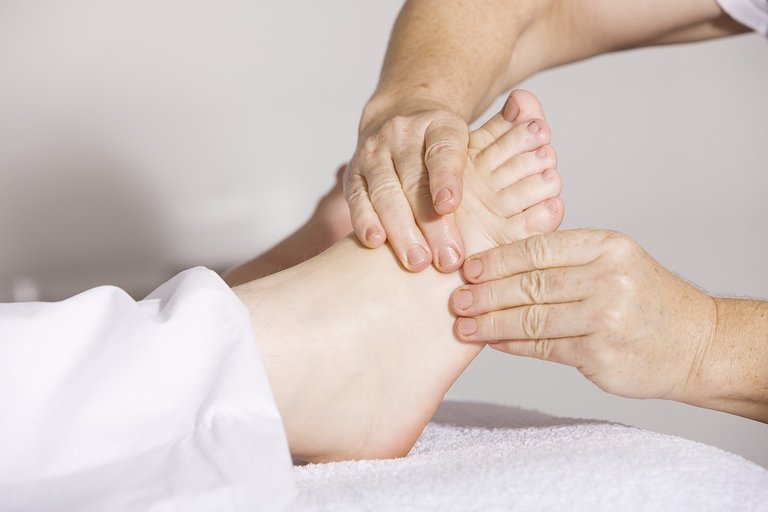In reflexology, the foot is viewed as a microcosm of the entire body. Specific areas, also known as zones, on the foot correspond with parts of the body. During a reflexology session, pressure is applied to the feet using techniques like thumb walking, finger walking, hooking, pressure circles and rotation. Along with a host of other benefits, advocates of reflexology explain that this pressure helps break down waste deposits in the body, resulting in improved energy flow. A reflexology massage can also improve blood and lymph circulation.
Things You'll Need
- Reflexology foot diagram
- Basin of warm water
- Towel Talcum powder (optional)
- Glass of water
Basic Reflexology Foot Massage
Step 1
Soak feet in a basin of warm water, then towel dry. Use open hands to make long strokes from the ankle to toes. Repeat until you have covered the entire foot and ankle area. Alternately flex and point the foot three times, hinging at the ankle and supporting the heel. Continue to support at the ankle and rotate the foot at the ankle three times. Repeat this warm up massage on the other foot.
Step 2
Cup the heel in one hand and place the thumb of the other hand at the solar plexus. The thumb should be pointing toward the little toe. Alternately bend and straighten the thumb, pushing gently into the tissue as you "walk" it across the length of the solar plexus. Repeat one more time, then walk the thumb back to the middle of the solar plexus, below the second and third toe. Turn the thumb with the tip pointing toward the toes and press the pad of the thumb three times into this area.
Step 3
Position the thumb at the outer edge of the big toe. Walk the thumb up the side of the toe, over the top, and down the inside. Use the index finger and, in a motion similar to that of the thumb, "finger walk" across the nail of the big toe and down the front. Repeat both of these actions until all the surface area of the big toe has been covered. Finish by thumb walking around the base of the toe.
Step 4
Finger walk up the side of the second toe, over the tip and down the other side in a horseshoe pattern. Continue in this pattern until each of the four small toes has been covered. Using a combination of thumb walking and finger walking, walk along the bottoms and tops of each toe as well. Repeat this until the surface of each toe has been covered. Finish by thumb walking a horizontal line along the base of all the toes.
Step 5
Point the tip of the thumb toward the toes and thumb walk a horizontal line across the lung region of the foot. Repeat this until the entire ball of the foot has been covered. Then, with the tip of the thumb pointing toward the side of the foot, thumb walk horizontal lines across the arch and mid portions, treating this entire region. Finish by pointing the tip of the thumb toward the toes again and thumb walking horizontally across the heel pad as many times as is necessary to cover the entire region.
Step 6
Complete steps two through five on one foot, then repeat them on the other foot. End the treatment with long, open handed strokes from the ankle to the toes. After a reflexology treatment, it's important to drink some water and try to increase overall water intake throughout the day. This will help to flush toxins out of the body.
Tips and Warnings
- Print a copy of the foot diagram (link in Resource section) ahead of time to utilize as a reference during the treatment. These reflexology techniques can be performed on someone else or as self reflexology. A small amount of talcum powder may be used for the first step if desired. Like exercise, reflexology results are cumulative. For best results, try daily sessions over an extended period of time. Reflexology pressure should be firm and even. It should not hurt or tickle. Consider consulting a trained reflexologist to learn additional techniques and for a reflexology program that is tailored to individual needs.
- Reflexology should not take the place of medical therapy. People with medical conditions and women who are pregnant should consult their health care provider before using reflexology therapy. Do not perform reflexology on open, inflamed or injured areas. Avoid touching any areas with visible Athlete's Foot or other skin conditions. Wash hands before and after performing reflexology.
References
"The Illustrated Guide to Massage and Aromatherapy"; Catherine Stuart
National Center for Complementary and Alternative Medicine
